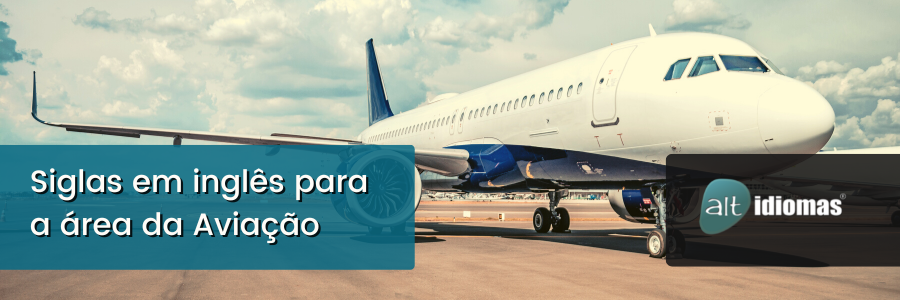
30 siglas em inglês da área de Aviação
Se o seu sonho de carreira é a aviação, você já deve saber que o inglês é um instrumento útil e essencial para qualquer profissional da área. Reunimos, então, 30 siglas em inglês para você conhecer, estudar e, claro, usar! E, como na Alt Idiomas não trabalhamos com tradução, você encontrará a explicação 100% em inglês para absorver ainda mais vocabulário. 😉
Check it out!
- AACI – airports association council international
- AAVCS – automatic aircraft vectoring control system
- ABCU – alternate braking control unit
- ACAS II – airborne collision avoidance system
- BASE – cloud base, the lower surface of a cloud.
- BFF – before first flight (Piloting)
- BFDAS- basic flight data acquisition system
- CAO – cargo aircraft only
- CANSO – civil air navigation services organization
- CALL – computer-assisted language learning
- CFTT – controlled flight towards terrain
- DDCU – dedicated display and control unit
- EAC – expected approach clearance
- FCC (1) – flight control center
- GLD – glider. Fixed-wing aerodyne designed to glide, ordinarily having no internal propulsion.
- HAATC – high altitude air traffic control
- ISA- international standard atmosphere.
Atmosphere in which the sea level pressure is 1013.25 hectopascals, temperature is 15ºC, air density is 0.002378 slugs/ft3 or 1.225 kg/m3, acceleration due to gravity is 32.174 ft/s2 (9.809 m/s2), and the speed of sound is 761 mph, or 1116.4 ft/s (1225.35 km/h). It has a uniform lapse rate until the temperature drops to -56.5ºC, at 36,090 ft (11 km), after which the temperature is constant until tropopause. All aerodynamic calculations are based on the ISA. - JTSO- joint technical standard order
- KSA- knowledge, skill(s) and attitude(s)
- LCN – load classification number. The number which defines the load-carrying capacity of the paved surface of an aerodrome.
- MANPAD – man portable air-defense system
- NEF – noise exposure forecast. The total summation (on an energy basis) over a 24 hour period (weighted for the time of day) of effective perceived noise level (EPNL) minus the constant 88 dB. NEF is used to determine the relative noise impact of aircraft noise near an airport.
- OECD – organization for economic co-operation and development
- PAPI – precision approach path indicator
- QNH – Altimeter subscale setting to obtain elevation when on the ground.
- RCLL – runway centre line lights. Flush centerline lights spaced at 50-foot intervals beginning 75 feet from the landing threshold and extending to within 75 feet of the opposite end of the runway.
- SADCC -southern african development coordination conference
- VFTO – final takeoff speed
- WMO – world meteorological organization
- YCZ – yellow caution zone
Gostou do artigo? Compartilhe! 🙂





